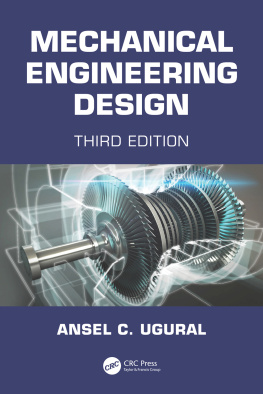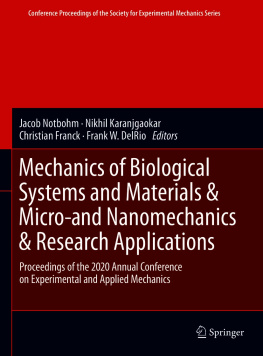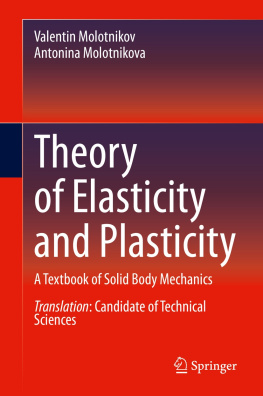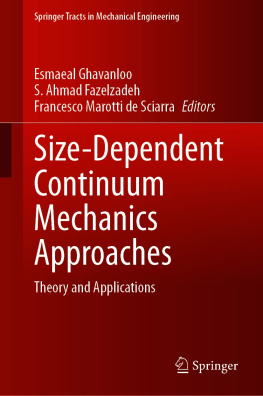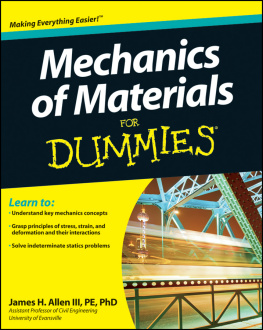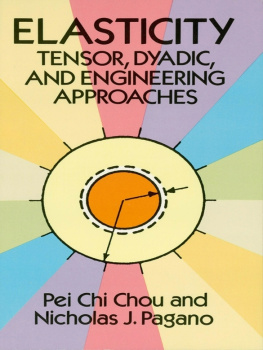Ansel C. Ugural - Advanced Mechanics of Materials and Applied Elasticity
Here you can read online Ansel C. Ugural - Advanced Mechanics of Materials and Applied Elasticity full text of the book (entire story) in english for free. Download pdf and epub, get meaning, cover and reviews about this ebook. year: 0, genre: Science. Description of the work, (preface) as well as reviews are available. Best literature library LitArk.com created for fans of good reading and offers a wide selection of genres:
Romance novel
Science fiction
Adventure
Detective
Science
History
Home and family
Prose
Art
Politics
Computer
Non-fiction
Religion
Business
Children
Humor
Choose a favorite category and find really read worthwhile books. Enjoy immersion in the world of imagination, feel the emotions of the characters or learn something new for yourself, make an fascinating discovery.

- Book:Advanced Mechanics of Materials and Applied Elasticity
- Author:
- Genre:
- Year:0
- Rating:3 / 5
- Favourites:Add to favourites
- Your mark:
- 60
- 1
- 2
- 3
- 4
- 5
Advanced Mechanics of Materials and Applied Elasticity: summary, description and annotation
We offer to read an annotation, description, summary or preface (depends on what the author of the book "Advanced Mechanics of Materials and Applied Elasticity" wrote himself). If you haven't found the necessary information about the book — write in the comments, we will try to find it.
Advanced Mechanics of Materials and Applied Elasticity — read online for free the complete book (whole text) full work
Below is the text of the book, divided by pages. System saving the place of the last page read, allows you to conveniently read the book "Advanced Mechanics of Materials and Applied Elasticity" online for free, without having to search again every time where you left off. Put a bookmark, and you can go to the page where you finished reading at any time.
Font size:
Interval:
Bookmark:
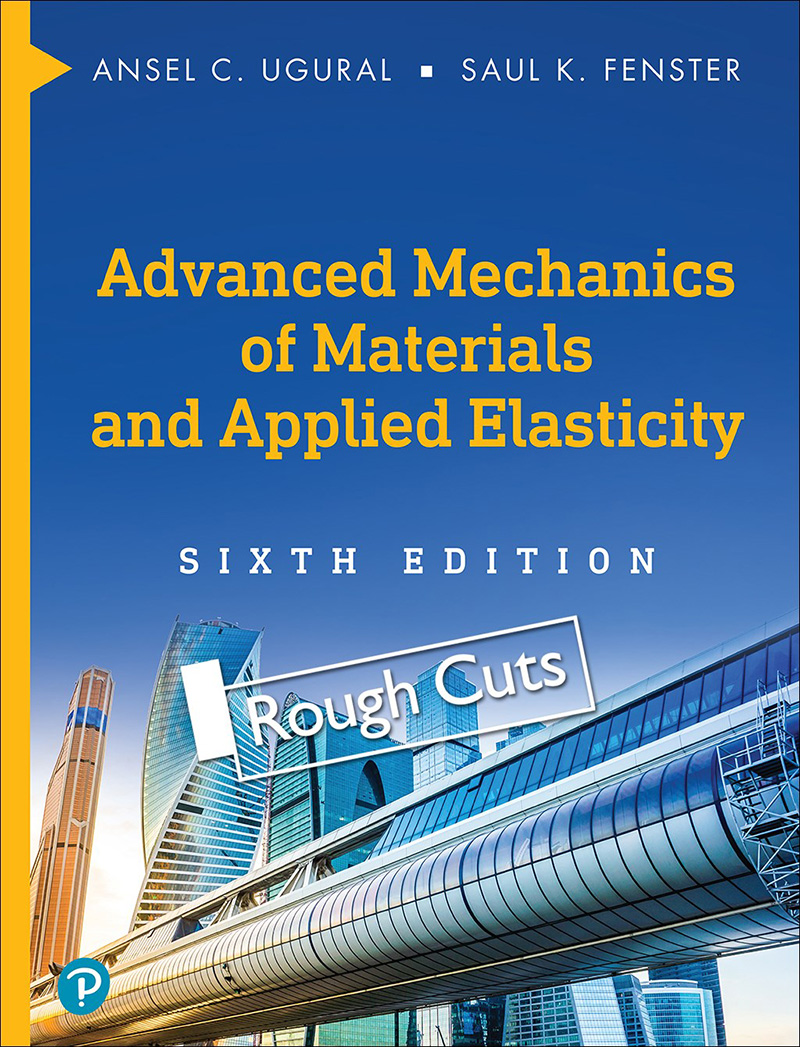
Sixth Edition
Ansel C. Ugural
Saul K. Fenster

This text is a development of classroom notes prepared in connection with advanced undergraduate and first-year graduate courses in the mechanics of solids and elasticity. It is designed to satisfy the requirements of courses subsequent to an elementary treatment of the strength of materials. In addition to its applicability to aeronautical, civil, and mechanical engineering and to engineering mechanics curricula, the text is useful to practicing engineers. Emphasis is given to numerical techniques (which lend themselves to computerization) in the solution of problems resisting analytical treatment. The stress placed on numerical solutions is not intended to deny the value of classical analysis, which is given a rather full treatment. It instead attempts to fill what the authors believe to be a void in the world of textbooks.
An effort has been made to present a balance between the theory necessary to gain insight into the mechanics, but which can often offer no more than crude approximations to real problems because of simplifications related to geometry and conditions of loading, and numerical solutions, which are so useful in presenting stress analysis in a more realistic setting. This text emphasizes those aspects of theory and application that prepare a student for more advanced study or for professional practice in design and analysis.
The theory of elasticity plays three important roles in the text: it provides exact solutions where the configurations of loading and boundary are relatively simple; it provides a check on the limitations of the mechanics of materials approach; and it serves as the basis of approximate solutions employing numerical analysis.
To make the text as clear as possible, attention is given to the presentation of the fundamentals of the mechanics of materials. The physical significance of the solutions and practical applications are given emphasis. A special effort was made to illustrate important principles and applications with numerical examples. Consistent with announced national policy, problems are included in the text in which the physical quantities are expressed in the International System of Units (SI). All important quantities are defined in both SI and U.S. Customary System (USCS) of units. A sign convention, consistent with vector mechanics, is employed throughout for loads, internal forces, and stresses. This convention conforms to that used in most classical strength of materials and elasticity texts, as well as to that most often employed in the numerical analysis of complex structures.
Because of the extensive subdivision into a variety of topics and the employment of alternative methods of analysis, the text should provide flexibility in the choice of assignments to cover courses of varying length and content. Most chapters are substantially self-contained. Hence, the order of presentation can be smoothly altered to meet an instructors preference. It is suggested, however, that ) may differ according to the scope of the course.
This sixth edition of Advanced Mechanics of Materials and Applied Elasticity seeks to preserve the objectives and emphases of the previous editions. Every effort has been made to provide a more complete and current text through the inclusion of new material dealing with the fundamental principles of stress analysis and design: stress concentrations, contact stresses, failure criteria, fracture mechanics, compound cylinders, finite element analysis (FEA), energy and variational methods, buckling of stepped columns, common shell types, case studies in analysis and design, and MATLAB solutions. The entire text has been reexamined and many improvements have been made throughout by a process of elimination and rearrangement. Some sections have been expanded to improve on previous expositions.
The references (identified in brackets), provided as an aid to the student who wishes to further pursue certain aspects of a subject, have been updated and listed at the end of each chapter. We have resisted the temptation to increase the material covered except where absolutely necessary. However, it was considered desirable to add a number of illustrative examples and problems important in engineering practice and design. Extra care has been taken in the presentation and solution of the sample problems. All the problem sets have been reviewed and checked to ensure both their clarity and numerical accuracy. Most changes in subject-matter coverage were prompted by the suggestions of faculty familiar with earlier editions.
It is hoped that we have maintained clarity of presentation, simplicity as the subject permits, unpretentious depth, an effort to encourage intuitive understanding, and a shunning of the irrelevant. In this context, as throughout, emphasis is placed on the use of fundamentals in order to build student understanding and an ability to solve the more complex problems.
The book is accompanied by a comprehensive instructors Solutions Manual. Written and class tested, it features complete solutions to all problems in the text. Answers to selected problems are given at the end of the book. PowerPoint slides of figures and tables and password-protected Solutions Manual are available for adopters at the Pearson Instructor Resource Center, pearsonhighered.com/irc.
Optional Material is also available from the Pearson Resourse Center, pearsonhighered.com/Irc. This includes solutions using MATLAB for a variety of sample problems of practical importance. The book is independent of any software package.
This content is currently in development.
This content is currently in development.
This content is currently in development.
There are two major parts to this chapter. Review of some important fundamentals of statics and mechanics of solids, the concept of stress, modes of load transmission, general sign convention for stress and force resultants that will be used throughout the book, and analysis and design principles are provided first. This is followed with treatment for changing the components of the state of stress given in one set of coordinate axes to any other set of rotated axes, as well as variation of stress within and on the boundaries of a load-carrying member. Plane stress and its transformation are of basic importance, since these conditions are most common in engineering practice. The chapter is thus also a brief guide and introduction to the remainder of the text.
The basic structure of matter is characterized by nonuniformity and discontinuity attributable to its various subdivisions: molecules, atoms, and subatomic particles. Our concern in this text is not with the particulate structure, however, and it will be assumed that the matter with which we are concerned is homogeneous and continuously distributed over its volume. There is the clear implication in such an approach that the smallest element cut from the body possesses the same properties as the body. Random fluctuations in the properties of the material are thus of no consequence. This approach is that of
Font size:
Interval:
Bookmark:
Similar books «Advanced Mechanics of Materials and Applied Elasticity»
Look at similar books to Advanced Mechanics of Materials and Applied Elasticity. We have selected literature similar in name and meaning in the hope of providing readers with more options to find new, interesting, not yet read works.
Discussion, reviews of the book Advanced Mechanics of Materials and Applied Elasticity and just readers' own opinions. Leave your comments, write what you think about the work, its meaning or the main characters. Specify what exactly you liked and what you didn't like, and why you think so.

